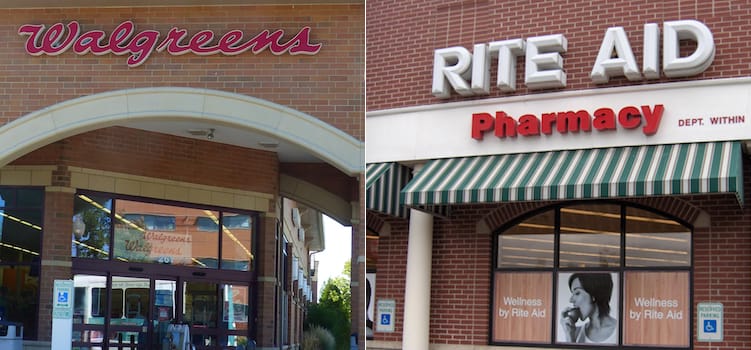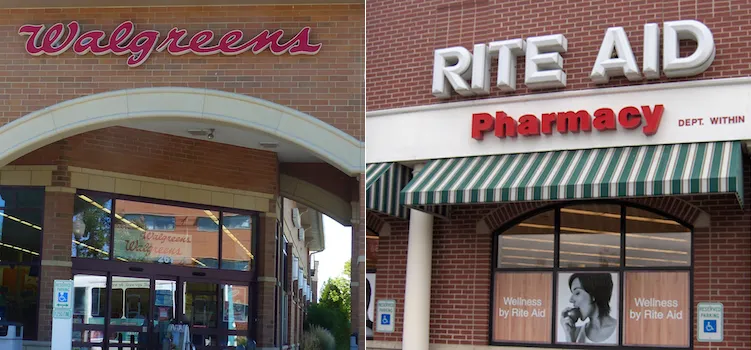
DEERFIELD, Ill. — Walgreens Boots Alliance Inc. (WBA) and Rite Aid Corp. have extended the time frame for completing their planned $17.2 billion merger.
The companies have pushed back the end date for the deal by three months to January 27, and they expect the transaction to close early next year. Both companies had the right to extend the end date.
“We are confident, as confident as we were before,” WBA executive vice chairman and chief executive officer Stefano Pessina said during the company’s conference call discussing earnings. “Nothing has changed. We have just a delay in the execution of the deal.”
Saying WBA has never seen an “absolutely negative” attitude from the Federal Trade Commission, he added, “At the end of the day, I believe we have had a good collaboration; we are having a good collaboration. We try to respond to the all of their needs. This takes time. But at the end, we are still confident.”
WBA had announced the agreement to acquire Rite Aid for $9 per share in cash, plus debt, last fall, projecting that the deal would get done within 12 months. WBA reiterated the update it gave on the transaction in early September and said the process of getting regulatory clearance is “progressing as planned.”
WBA continues to expect that it will most likely have to divest between 500 and 1,000 stores, it said. “The company believes that it will be able to execute agreements to divest these stores to potential buyers, pending FTC approval, by the end of calendar year 2016 and now expects its acquisition of Rite Aid will close in early calendar 2017.”
WBA had originally said it was willing to shed up to 1,000 stores to win regulatory approval but expected the final number to be less than half that. Walgreens has 8,173 stores, including outlets in Puerto Rico and the U.S. Virgin Islands, while Rite Aid operates 4,560 stores in 31 states and the District of Columbia. The merger will push Walgreens ahead of CVS Pharmacy, which has some 9,600 stores, as the No. 1 drug chain in the country.
Finding a buyer for the stores that have to be shed has been daunting, according to media reports. Kroger Co. was reportedly hedging because the FTC was demanding that the divested locations remain stand-alone drug stores, rather than letting the supermarketer integrate their pharmacy files into nearby supermarkets. Earlier reports said a block of 650 stores earmarked for divestiture drew a ho-hum response from private equity firms.
“No idea about the sources of this news,” Pessina said during the conference call. “We see just a long administrative process, but we don’t see substantial differences from what we were expecting. Yes, probably more stores, a little more stores here and there. But at the end of the day, as far as I can see today, as far as we can see today, we are absolutely confident that we … can do the deal and we can create the value.”
When the WBA-Rite Aid merger deal was initially announced in October 2015, the companies named by industry observers as prospective buyers of divested stores included CVS Health, Walmart and Kroger. However, Walmart has scaled back its small-format store strategy, and CVS has reportedly expressed concerns about cannibalization of its own units.
“Even if Kroger is an uninterested buyer, potential remaining Rite Aid store buyers include CVS, regional pharmacy chains and private equity in regional areas where they can buy enough stores to give them scale,” Deutsche Bank Securities analyst George Hill wrote in a research note. “While Kroger is on the list of potential suitors, we do not view them as core to the store sales, as their business is largely focused on a different store format than the stand-alone pharmacy stores that Walgreens/Rite Aid would be selling.”
WBA may have to sweeten the pot by lowering the price and/or offering better locations to potential suitors, according to Hill.
“While we would not expect WBA to need to sell the stores at a loss, it is not shocking that the initial package of stores being offered is less attractive,” he explained. “And we would not be surprised if WBA will need to offer more attractive stores or a lower valuation to finalize the deal with buyers, given buyers’ privileged negotiating position.”
Another consideration for regulatory approval of the deal is the influence of pharmacy benefit managers in pharmacy market competition, Hill added.
“The FTC is reported to still be reviewing issues related to the PBMs, which could mean that the current divestiture package that Walgreens is offering is unsatisfactory from the FTC’s viewpoint,” he stated. “Should Walgreens find potential store buyers for what the FTC may deem to be an insufficient divestiture package, it is believed that the FTC may require Walgreens to divest more Rite Aid stores. Alternatively, if Walgreens is unable to attract buyers, the FTC could block the deal through a lawsuit, pushing back the merger agreement’s end date.”







